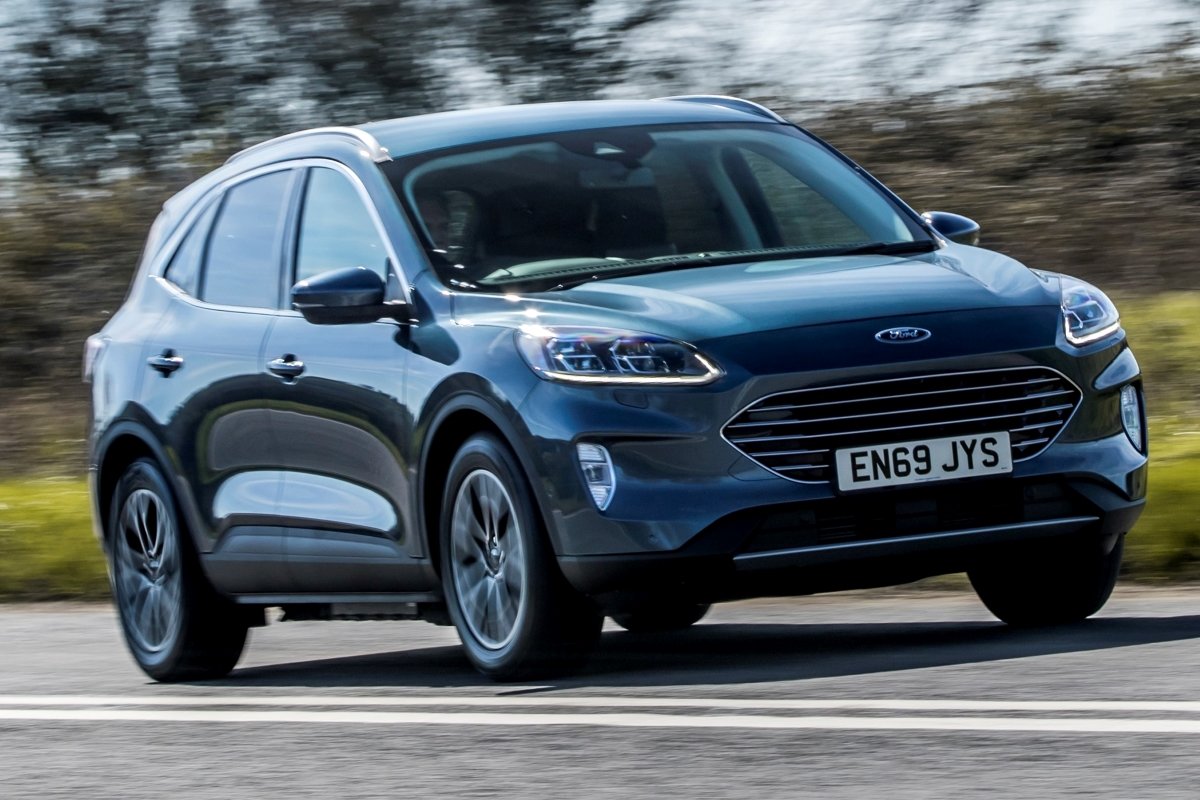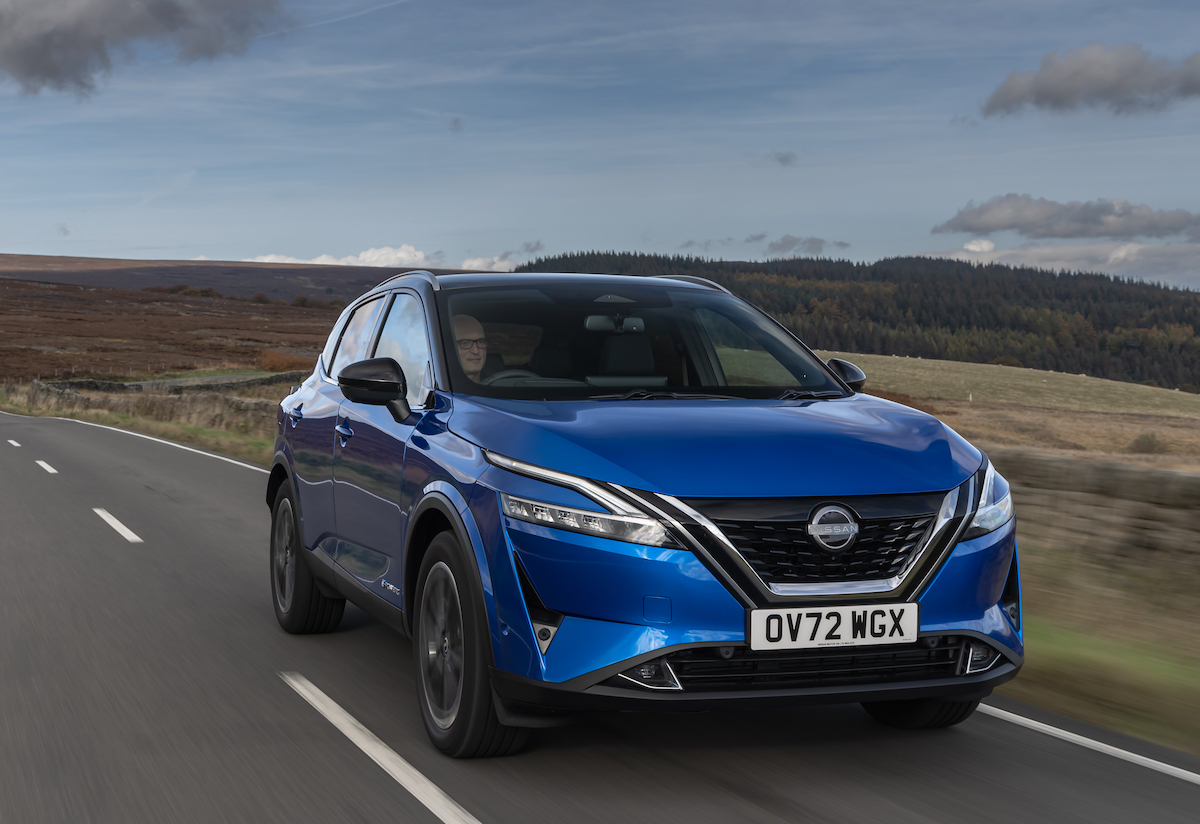The Ford Kuga and Nissan Qashqai are two excellent family SUV choices in the UK market. Both offer a raised driving position, versatile interiors, and efficient powertrains in a compact package. But which one is the better all-round buy?
In this comparison, we'll assess how the Kuga and Qashqai stack up across key areas like practicality, driving experience, equipment levels, and running costs. We've compiled detailed information from in-depth reviews of both models to help you understand their strengths and weaknesses, and decide which one best suits your needs.
Ford Kuga vs Nissan Qashqai




Practicality
The Ford Kuga and Nissan Qashqai are both family-friendly SUVs that prioritise interior space and versatility. However, there are some key differences when it comes to practicality.
Inside the Kuga, there's generous head and legroom even for taller occupants. The lofty driving position gives good visibility, though the thick front pillars can obscure junctions slightly. The rear seats slide to optimise legroom or boot space as needed. Most models have a 475-litre boot, dropping to 411 litres for the plug-in hybrid (PHEV) variant.
The Qashqai also impresses with ample rear legroom and headroom. However, it lacks the sliding rear seats of the Kuga, limiting versatility slightly. Boot space ranges from 436 litres in four-wheel drive models up to 504 litres in front-wheel drive versions - giving it just a slight edge over the Kuga's non-PHEV variants.
Both offer split-folding rear seats, but the Qashqai's boot has some clever design touches like a split, variable-height floor to aid practicality further. So while the Kuga is highly competitive for space, the Qashqai isn't far behind.
Driving Impressions
Ford has an excellent reputation for making cars that are genuinely enjoyable to drive, and the Kuga upholds this with direct, well-weighted steering and surprisingly sharp handling for an SUV. Body roll is well-controlled, allowing you to tackle twisty roads with confidence. Yet it also blends this driver engagement with a comfortable, compliant ride quality that soaks up bumps well.
The Kuga offers a wide range of electrified powertrains, including mild hybrid diesels and a plug-in hybrid (PHEV) model. The PHEV combines punchy 225hp performance with an official 200+mpg economy figure, though high-mileage drivers may be better off with one of the conventional diesels which promise excellent real-world efficiency.
In contrast, the Qashqai has a more limited engine line-up focused on 1.3-litre petrol engines with mild hybrid technology, as well as a full hybrid e-Power model. These are punchy enough for daily driving, but lack the overall urgency and flexibility of the Kuga's powertrains.
Where the Qashqai scores back points is in its comfort-oriented driving experience. It's not as agile as the Kuga through corners, but has light yet direct steering, impressive high-speed refinement, and a pliant suspension setup that makes it an effortless cruiser on the motorway.
So while the Kuga is the more rewarding drive for keen drivers, the Qashqai's relaxed driving manners and smoother low-speed ride quality could make it a more appealing daily companion for some. The Kuga's wider range of electrified powertrains (notably the PHEV model) is also a key advantage, though.
Technology and Equipment
Even the entry-level Kuga Zetec comes well-equipped with kit like air conditioning, front and rear parking sensors, and an 8.0-inch touchscreen with smartphone mirroring. Higher trims add luxuries like a powered tailgate, digital instruments, keyless entry and heated seats.
The Qashqai follows a similar strategy, with even the Acenta Premium base model getting adaptive cruise control and LED headlights. N-Connecta adds dual-zone climate control, a surround-view camera system and ambient lighting, while top-spec Tekna+ versions push the boundaries with quilted leather, a premium Bose audio system and even a driver's massage function.
Both cars feature user-friendly infotainment systems with clear graphics, though the Qashqai's menus can be slightly confusing at times. Overall, it's a close-run thing for equipment levels across the ranges.
Running Costs
For company car drivers, the Kuga PHEV is the standout choice thanks to its low Benefit-in-Kind tax rating. Private buyers with short daily commutes can also exploit its potential for ultra-low running costs by making the most of its 35-mile electric range.
The Qashqai counters with competitive list prices, strong predicted resale values, and respectable but unexceptional fuel economy figures – most versions achieving around 40-45mpg in real-world driving. Its E-Power hybrid is the most efficient at around 55mpg.
Scheduled maintenance for the Qashqai is required annually or every 18,000 miles, unless you opt for the E-Power which needs servicing every 9,000 miles.
Insurance groups are competitive for both models. Overall though, the Kuga PHEV has the potential for the lowest running costs if your driving patterns suit it.
Verdict
The Ford Kuga and Nissan Qashqai are both highly accomplished family SUV contenders that do a great all-round job of blending practicality, technology and affordable running costs.
For those who value driving engagement and low company car tax costs, the Kuga kight be the one to go for. Its range of electrified powertrains offers punchy yet efficient performance, while its sharp handling and comfortable ride make it genuinely enjoyable to drive by class standards. It's also very well equipped.
However, the Qashqai remains an appealing vehicle that's slightly more family-friendly thanks to its cleverly designed boot space. It's not quite as fun as the Kuga, but its smooth driving manners, impressive infotainment and strong value proposition ensure it remains a firm favourite.
Like many in this sector, these machines are very closely matched; and they're both good choices that excel in different areas. For us. though. the Kuga edges the win here.

